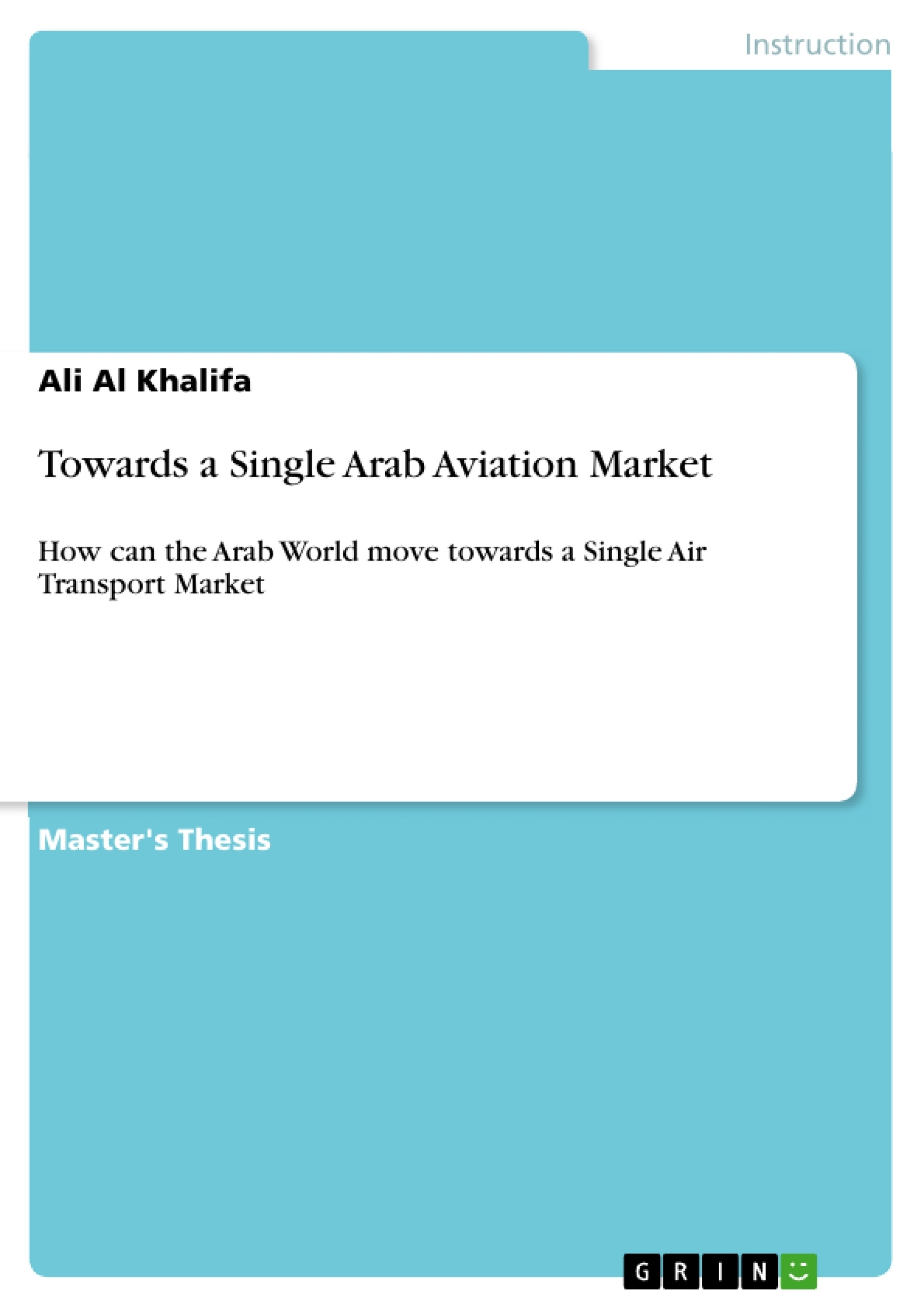This paper examines the state of liberalisation within the Arab World and discusses how it can move towards a single air transport market. It shows what regional liberalisation has meant for the American and European air transport industries. It shows how much there is to gain from regional liberalisation and some of the threats and costs of delaying it further.
Inhaltsverzeichnis (Table of Contents)
- EXECUTIVE SUMMARY
- 1. INTRODUCTION
- 1.1 Objectives:
- 2. LITERATURE REVIEW
- 2.1 The Chicago Convention
- 2.2 Open Skies
- 2.3 The US Experience in Air Transport Liberalisation
- 2.4 The European Experience of Air Transport Liberalisation
- 3. AIR TRANSPORT IN THE ARAB WORLD
- 3.1 Damascus Convention
- 3.2 Challenges to Arab Integration
- 3.3 Privatisation
- 3.4 Low Cost Carriers
- 3.5 Outlook
- 4. THE GULF COOPERATION COUNCIL (GCC)
- 4.1 History of Aviation in the GCC
- 4.2 Aviation in the GCC Today
- 4.2.1 Saudi Arabia
- 4.2.2 The United Arab Emirates (UAE)
- 4.2.3 Qatar
- 4.2.4 Kuwait
- 4.2.5 Bahrain
- 4.2.6 Oman
- 5. WEAKNESSES OF AND THREATS TO THE GCC AVIATION MODEL
- 5.1 The Euro-Mediterranean Agreement
- 5.2 Scope for gains from a single GCC aviation market
- 5.3 Risks of GCC Single Market
- 6. CONCLUSIONS
- ANNEX 1
- ANNEX 2
- WORKS CITED
Zielsetzung und Themenschwerpunkte (Objectives and Key Themes)
This paper examines the current state of air transport liberalization within the Arab World and explores the potential benefits of a single Arab aviation market. It analyzes regional liberalization in the American and European air transport industries and highlights the advantages and challenges of such a model for the Arab region.
- The benefits of air transport liberalization
- The challenges and threats to Arab integration in aviation
- The potential for a single Arab aviation market
- The role of the Gulf Cooperation Council (GCC) in regional liberalization
- The economic and social impact of air transport liberalization
Zusammenfassung der Kapitel (Chapter Summaries)
The paper begins by presenting the benefits of air transport liberalization, drawing from the experiences of Europe and the United States. It explores the history and challenges of aviation in the Arab World, focusing on the Damascus Convention and the need for greater regional integration. The paper then delves into the GCC, examining its history of aviation and the current state of the industry within its member states.
It further explores the strengths and weaknesses of the GCC aviation model, analyzing the potential gains from a single GCC market and the risks associated with such a move. The paper concludes by emphasizing the potential benefits of air transport liberalization for the Arab region, highlighting the GCC's potential to lead the way towards a single Arab aviation market.
Schlüsselwörter (Keywords)
Air transport liberalization, Arab aviation, GCC, regional integration, single market, economic growth, job creation, air traffic, low-cost carriers, aviation policy, privatization, Damascus Convention, Chicago Convention, Open Skies, Euro-Mediterranean Agreement, American air transport, European air transport.
- Citation du texte
- Ali Al Khalifa (Auteur), 2013, Towards a Single Arab Aviation Market, Munich, GRIN Verlag, https://www.grin.com/document/372376



